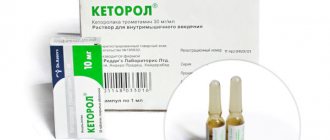Suturing after tooth extraction is a standard procedure. The doctor closes the hole when indicated or at the request of the patient. Tightly fixed edges of the wound speed up the healing process, relieve pain, and reduce the risk of complications. Immediately after the surgical operation, the dental surgeon explains the rules of hygiene - how to care for the socket, what to do if the sutures come apart after tooth extraction.
Indications for suturing after tooth extraction
In surgical dentistry, it is customary to suture the socket of the removed unit if:
- wisdom teeth were extracted and figure eights were removed;
- there is a risk of severe bleeding - according to patient examinations or as a preventive measure;
- Extirpation of impacted and dystopic teeth was performed;
- the removal was difficult - the crown part of the tooth was severely destroyed or the roots of the extracted unit were significantly curved.
All surgical removal operations, when the dentist cuts the gum and injures the jaw tissue, involve suturing the edges of the resulting hole.
Also, the socket of the extracted tooth is sutured after the implant is installed in it. The procedure is carried out as part of a one-stage implantation with delayed prosthetics. An implant surgeon combines two operations. After extracting the tooth and assessing the condition of the socket using a control x-ray, the doctor implants a dental implant, which will subsequently become a support for a permanent dental crown. The operation is performed only after preliminary preparation, since the patient must undergo a full examination and hardware diagnostics.
The need for suturing in dentistry
Surgical intervention and, as a consequence, suturing are indicated for the following manipulations:
- Removal of wisdom teeth - third molars differ from the rest in the large size of the tooth crown and its root. Late eruption, the position of the “extreme” in the dentition very often leads to a violation of the physiological location of the tooth or even its impaction (partial or complete failure to erupt). In this regard, the procedure for removing a wisdom tooth is often accompanied by complications - extensive damage to the soft tissues of the oral cavity and alveolar process, ligaments, and blood vessels. To avoid this kind of consequences, dentists apply stitches to reduce the wound.
- Implantation - its implementation is always accompanied by the need for surgical intervention. A deep incision in the gum requires suturing.
- Maxillofacial operations - elimination of the consequences of traumatic injuries, congenital defects of the dentofacial apparatus.
- Removal of tumors of various etiologies - the integrity of the soft tissues of the oral cavity is damaged, often requiring layer-by-layer sutures.
Pain after suturing the hole: pathology and norm
Pain in the suture area is normal. Injury to the gums due to major surgery causes pain, especially in the first days.
The patient must understand that tooth extraction means damage to the ligaments that hold the tooth in the gum, rupture of nerve fibers and blood vessels. During the operation, the pain is blocked by the anesthetic, but after the anesthesia wears off, discomfort is observed at the site of the sutures.
The following sensations should not cause concern:
- aching pain for the first 24 hours after removal;
- slight swelling of the tissues in the surgical area
- discomfort and slight pain when opening the mouth;
- short-term increase in body temperature.
In rare cases, after a complex removal, the patient may experience chills, facial swelling, purulent discharge, cough, and nausea. These signs should not be ignored - it is better to immediately seek help from a specialist.
Suture removal after implantation
Patients are always interested in the question “On what day after implantation are the sutures removed?” Usually, for those whose healing went well and there was no suppuration, the threads are removed after 10-14 days. All this time, the area above the implant must be treated with antiseptics and protected from injury. The first days after surgery, you may feel as if threads are being pulled. Often there is a discharge of ichor. After the thread extraction procedure, which is absolutely painless, the doctor will recommend continuing the preventive course.
Types of suture materials in surgical dentistry
In dental clinics, different types of threads are used to fix the edges of the sockets during tooth extraction:
- Synthetic, self-resorbable due to hydrolysis reaction. These are threads with a hypoallergenic composition that guarantee reliable fixation of the wound edges for about a month.
- Natural, absorbable, enzyme-based surgical suture material. The stitches disappear in 10-100 days, and the thread segments are safely removed from the human body.
- Synthetic regular threads. Made from silk, nylon, polyester. They require mechanical removal after complete healing of the hole.
In what cases are sutures placed on the gums?
The dentist fights to save a tooth like an inch of his native land in war. But there are cases when it is necessary to pull out a tooth: if it is practically destroyed, there is purulent inflammation in the root area.
When removing a wisdom tooth, sutures are required on the socket or gum papillae. This is due to the traumatic nature of the operation - damage to a large volume of tissue due to the deep roots of the “eight” and the possible growth of the tooth at an angle.
An additional tissue incision near the tooth is often necessary. Then, after extraction, the surgeon has to sew up the gum.
An incision is necessary when:
- removal of impacted teeth;
- severe destruction of the tooth crown;
- pathologies of its location - dystopia;
- curvature of roots.
Operations that require subsequent suturing of tissue are performed not only for problems with teeth, but also in the treatment of pathology of the gums (after removal of a cyst, abscess, fistula), jaw (fracture, osteomyelitis).
Sutures on the gums are required for patients with bleeding disorders to avoid prolonged, dangerous bleeding.
Why do gums need to be sutured after tooth extraction?
If the patient's gums are sutured, this will help it heal faster and without complications, because:
- the risk of infection of a wound closed with a suture is reduced by 90%;
- bleeding stops faster;
- a blood clot formed in the socket during surgery is an obstacle to the penetration of microorganisms deep into the wound;
- food particles do not enter the wound and do not injure the wound;
- sutures bring the edges of the tissues together, helping to grow together.
To heal the wound after suturing it is impossible on the 1st day:
- rinse your mouth so as not to wash out the clot that forms from the wound;
- warm the gums;
- chew on the side of the wound;
- eat too hot, hard food;
- smoke and drink alcohol;
- engage in heavy physical labor and sports.
This prevents wound infection, tissue injury, and bleeding.
How long do you need to walk with stitches?
The patient's actions depend on the type of suture material used by the doctor. If the doctor used a non-absorbable option, a control appointment is scheduled after 7-10 days. During the examination, the surgeon assesses the speed of healing and the condition of the wound. Decides on the need to remove sutures.
The procedure is quick and atraumatic. The thread is cut into small segments and painlessly removed from the gums. If the patient experiences discomfort and anxiety, the doctor can use topical anesthesia.
Self-absorbing sutures disintegrate on their own in about three weeks. The patient may not notice the material disappearing from the wound. Especially if healing is going well and the hole is not bothering you.
Complications: what to look out for
Even a sutured hole can become a source of problems or inflammation. The patient monitors the condition himself and should consult a doctor if any alarming symptoms appear:
- Heavy bleeding - for a day or more.
- Continuous pain - throbbing, especially severe at night or while eating.
- Swelling is gumboil in the area of tooth extraction.
- Redness is not only a change in the color of the gums, but also redness on the face in the projection of the extraction area.
- Blood in saliva - in the first three days after surgery.
- Increase in body temperature.
The listed symptoms indicate pathological processes and require urgent consultation with a doctor. After the examination, the doctor will prescribe treatment and decide on re-suturing.
Recommendations for oral care after surgery
After applying stitches, you must follow a number of rules:
- Do not pick at the wound again, do not touch it with your hands or tongue
- Don't eat too fatty foods
- It is better to give up solid foods - apples, nuts, seeds
- Do not try to remove stitches yourself
- Rinse your mouth with Rotokan solution and other means prescribed by your doctor.
- It is recommended to brush your teeth with a new toothbrush
- It is not recommended to use dental floss near the suture site.
- Don't drink alcohol
- Do not use medications that thin the blood
- Do not drink coloring or too hot drinks - coffee, black tea, lemonade, soda
- Do not try to stop the bleeding if intense bleeding occurs using self-prescribed medications. It is better to go to a 24-hour dental clinic or call a doctor at home.
What to do to prevent sutures from coming apart after tooth extraction
To prevent the sutures from coming apart prematurely, the patient needs to follow a few simple rules. Among them:
- Do not pry, touch or try to pull out the seams with your hands, toothpicks, or improvised objects.
- Avoid eating for the first 2 hours after surgery, do not smoke for 3-24 hours.
- Carry out all mandatory hygienic procedures for caring for the oral cavity, while brushing your teeth with extreme caution.
- Avoid eating hard, hot and cold foods in the first days after removal.
- Replace rinsing with antiseptic baths, when the medicinal composition is kept in the mouth for 1-1.5 minutes and spat out.
Compliance with all recommendations guarantees fast and safe healing. Ignoring advice can provoke wound infection, suppuration and suture separation, and the development of an inflammatory process.
Types of sutures and materials used in dentistry
To facilitate and accelerate the healing process of postoperative wounds in the oral cavity, the following types of sutures are used:
- nodal - used when it is important to ensure equal tension on both edges of the wound (for example, between teeth);
- continuous - when a violation of the integrity of soft tissue occurs along several dental units;
- single - each stitch is knitted separately from each other.
Threads used for suturing in dentistry can be made of absorbable and non-absorbable material.
Absorbable threads:
- from catgut - which contains a foreign protein, which is perceived by the body as a foreign body, and therefore often causes inflammation of the damaged soft tissue of the patient’s oral cavity;
- “Vicryl” is a synthetic material made from polyclatin and polyglycomic acid, which does not cause the risk of developing inflammatory processes even during complex operations.
Threads made of absorbable material do not require the removal of sutures; they disappear within 2-5 weeks.
Material for non-absorbable threads:
- silk is an easy-to-use material, highly durable, but has a significant drawback - it causes inflammatory processes in soft tissues if not removed 7 to 10 days after surgery;
- monofilament is a thread made of polytetrafluoroethylene, which is durable and does not cause inflammation, but has a rigid structure that can damage the mucous membrane. To exclude this possibility, a bandage is applied to the wound surface;
- polyester is a woven thread often coated with silicone for elasticity and smoothness. A very durable material that does not lead to inflammatory processes, but requires careful fixation in the form of knots.










